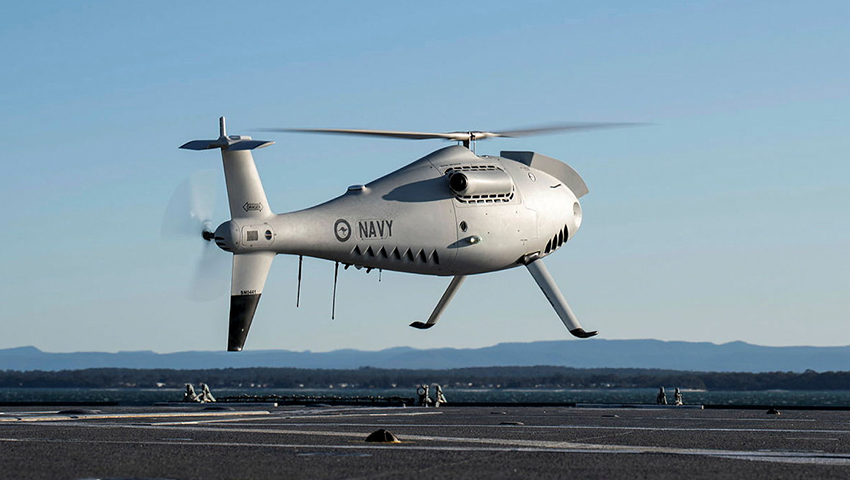The department has shed light on its decision to fast-track the maritime UAS program via a partnership with Raytheon Australia and Schiebel Pacific.
To continue reading the rest of this article, please log in.
Create free account to get unlimited news articles and more!
Defence has confirmed its selection of the Schiebel Pacific S-100 Camcopter as the preferred platform for Block One of the SEA 129 Phase 5 Maritime Unmanned Aircraft System project.
The program aims to deliver a UAS platform designed to perform intelligence, surveillance, and reconnaissance (ISR) missions from the RAN’s Anzac Class frigates and Arafura Class offshore patrol vessels (OPVs).
Raytheon Australia will serve as the prime systems integrator, with the company previously committing to set up an Asia-Pacific manufacturing and sustainment hub for S-100 UAS in the Shoalhaven region of NSW.
The company is now expected to work with Defence via a request for tender (RFT) procurement process before presenting to government for a Second Pass decision later this year.
As such, Defence has stressed it is yet to determine the size of a prospective S-100 Camcopter fleet and the value of a future contract, despite reports claiming 40 drones were ordered for a combined cost of $1.3 billion.
In a statement to Defence Connect, the department revealed as a result of its decision, the SEA 129 Phase 5 project could achieve initial operating capability (IOC) 18 months ahead of schedule.
“Accelerating Australia’s acquisition of remote and autonomous systems is critical to protecting Australia and its interests,” the spokesperson said.
Defence has also addressed concerns regarding the Camcopter’s use by hostile nations, including China and Russia, with the platform operated by over 16 maritime organisations on 17 classes of ships around the world.
“Defence conducted due diligence background checks and is aware of the number of systems in use internationally,” the spokesperson added.
The prospective Royal Australian Navy drones are set to be modified with “significantly different” mission sensors ahead of delivery.
“Defence has robust processes to ensure any platform introduced into service does not create vulnerabilities,” the spokesperson stated.
“In the case of the S-100, working with Raytheon Australia as the prime system integrator, all relevant systems will be scrutinised and approved to ensure the appropriate level of protection is in place.”
Schiebel has not conducted defence business with China since early 2015, and last supplied UAVs to a Russian commercial entity in 2015 for civilian use. Intellectual property rights or data were not shared with the Russian customer.
The unmanned aerial system (UAS) has been on trial with the RAN since 2016 after it was selected following a request for tender (RFT) for Navy Minor Project (NMP) 1942, which sought to procure a “proven” VTOL Maritime Tactical Unmanned Aircraft System – Interim Capability (MTUAS-IC) and associated engineering and logistics support for the Navy.
Last year, Schiebel Group secured a three-year contract extension to sustain the interim test platforms, which includes field support services, engineering and logistics elements, and the establishment of a sovereign Australian Camcopter S-100 training capability, delivered by Schiebel Pacific.
The Camcopter S-100 is billed as a small-medium sized vertical take-off and landing (VTOL) aircraft made of titanium and carbon fibre materials.
The platform is designed to carry multiple payloads simultaneously for up to six hours at a time.
The Camcopter S-100 can reportedly operate day and night, under adverse weather conditions, with a range out to 200 kilometres, both on land and at sea.
The unmanned aircraft can navigate automatically via pre-programmed GPS waypoints or can be operated directly with a pilot control unit.
The platform is operated via a point-and-click graphical user interface, transmitting high-definition payload imagery to the control station in real time.
By leveraging “fly-by-wire” technology controlled by redundant flight computers, the UAS can complete its mission automatically.
[Related: Defence expedites Schiebel Camcopter order]

 Login
Login







